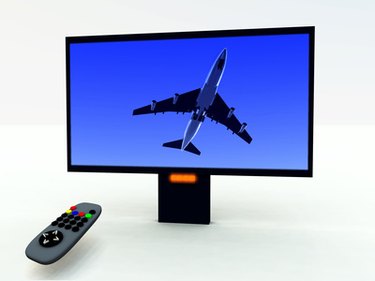
For years laptop computers have had the ability to output video via DVI and VGA. Many newer models can also provide output using the High-Definition Multimedia Interface (HDMI). This lets multimedia users, gamers and even business users to output video to external monitors and televisions, providing more screen room to work with. Although you may be familiar with using the DVI or VGA video standards to output video on notebooks, HDMI contains a few extra hurdles.
Step 1
Plug the monitor's HDMI cable into a flat HDMI port on the right or left side of the laptop. Make sure the other end is plugged into the display. The cable is identical on both sides, so it does not matter which end you connect to the laptop or monitor.
Video of the Day
Step 2
Plug the monitor into an electrical outlet and turn it on. If your monitor has multiple HDMI ports, you will need to select the channel that the monitor is plugged into. Toggle through the channels until an image appears on the monitor.
Step 3
Configure the display in Windows. Press the "Start" button and select "Control Panel." Type "display" in the search box near the top-right corner of the window. Click "Connect to an external display."
The default setting under "Multiple displays" is "Duplicate these displays." This mirrors your laptop screen onto the monitor. Click "Extend these displays" if you want to extend your Windows "Desktop" onto the HDMI monitor.
Video of the Day